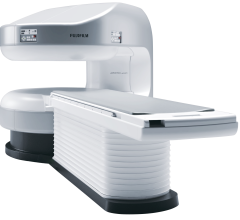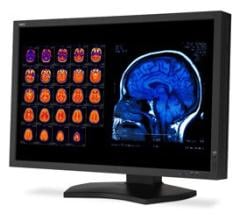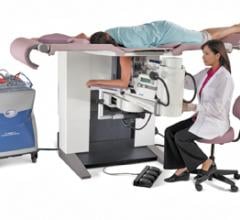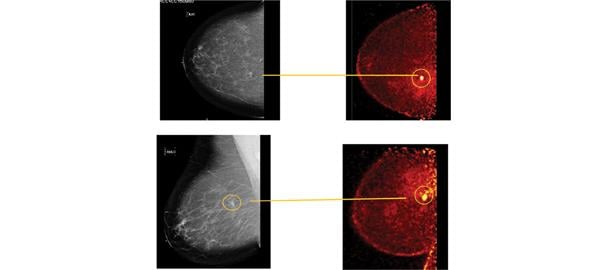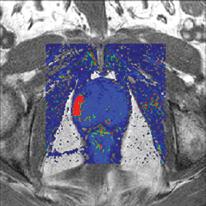June 30, 2011 – Breast cancer screening with mammography results in a significant reduction in breast cancer mortality, according to long-term follow-up results of a large-scale Swedish trial. The results are published online in the journal Radiology.
June 30, 2011 — Given a growing aging population, a rise in obesity rates and an increasing demand for patient-centric medical care, there are times when healthcare professionals simply need a “radiology room on wheels.”
June 30, 2011 — During the first quarter of 2011, Biosound Esaote completed a name transition to become Esaote North America. The purpose of this transition was to emphasize the relationship with its parent company, the Esaote Group.
Fujifilm’s APERTO Lucent is a 0.4T mid-field, open MRI system addressing today’s capability and image quality needs ...
June 29, 2011 — Vital Images, a Toshiba Medical Systems company, released Vitrea Enterprise Suite (VES), Version 6.1. Enhancements in Version 6.1 build on the Vitrea Enterprise Suite and improve clinical workflows through advancements such as expanded integration capabilities.
June 29, 2011 — A new study utilizing data from the Intersocietal Commission for the Accreditation of Nuclear Medicine Laboratories (ICANL) suggests that while noncompliance with reporting standards is found in the majority of nuclear cardiology laboratories throughout the U.S., those facilities participating in the ICANL accreditation process demonstrate an increase in compliance over time.

SPONSORED CONTENT — Fujifilm’s latest CT technology brings exceptional image quality to a compact and user- and patient ...
June 29, 2011 – The University of Chicago is allowing Pinnacle Oncology to acquire its technology and intellectual property rights for the development of a compound, amifostine, to prevent genomic instability caused by a variety of sources of ionizing radiation exposure, including common computed tomography (CT) scans.
SPONSORED CONTENT — Fujifilm’s latest CT technology brings exceptional image quality to a compact and user- and patient ...
June 29, 2011 –The U.S. Food and Drug Administration (FDA) has given 510(k) market clearance of the 30-inch MultiSync MD301C4 medical diagnostic display for the displaying and viewing of digital images for diagnosis by trained physicians. The display is made by NEC Display Solutions of America.
Since its introduction to the marketplace 20-plus years ago, digital radiography (DR) has been making an impact.
Probably the biggest trend occurring in cardiovascular ultrasound systems today is the adoption of 3-D/4-D echo systems, which offer the benefits of better images, more data, better measurement quantification and faster workflow. Other key trends include: software to speed workflow with fewer keystrokes and to enhance quantification; miniaturization; increased use of tissue strain imaging, and expanded use for operating room and cath lab procedures.
SPONSORED CONTENT — EnsightTM 2.0 is the newest version of Enlitic’s data standardization software framework. Ensight is ...
Dartmouth-Hitchcock is a national leader in academic medicine, particularly in evidence-based and patient-centered healthcare, medical research and healthcare policy reform. Dartmouth-Hitchcock Medical Center (DHMC) in Lebanon, New Hampshire, recently adopted a breast biopsy table designed with the goal of improving patient comfort during prone stereotactic biopsy procedures.
Replacement strategies for picture archiving and communications systems (PACS) have evolved in consort with advances in medical imaging technologies. Facilities want a new PACS to help improve workflow by streamlining processes, enhance patient care by integrating imaging with other IT systems – such as electronic medical records/electronic health records (EMRs/EHRs) for full patient history information, and achieve a lower total cost of ownership and return on investment than their existing PACS.
Picture archiving and communication systems (PACS) solutions have revolutionized the way radiologists and referring physicians review, interpret, share and interact with diagnostic imaging studies. Advances in PACS have enabled organizations to improve patient care and streamline operations. The integration of health information systems/radiology information systems (HIS/RIS) and PACS solutions has bridged gaps to improve efficiency.
Did you know that approximately one-third of all the data in world is created by the healthcare industry and that ...
Coupling 50 years of experience with the latest radiological imaging technology and treatments, Princeton Radiology is a global leader in the diagnosis, treatment and research of disease. With five offices located across the state of New Jersey, our practice maintains millions of radiological patient records, including 20 years worth of electronic medical records (EMRs). At Princeton Radiology, we are improving patient care and making data easier to share between offices and physicians. Digital images have changed the way our offices operate.
New studies investigate effectiveness of molecular breast imaging (MBI).
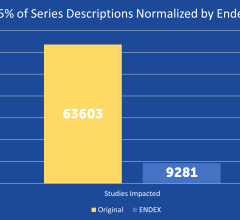
SPONSORED CONTENT — EnsightTM 2.0 is the newest version of Enlitic’s data standardization software framework. Ensight is ...
Positron emission mammography (PEM), a high-resolution breast PET scanner, relies on differences in glucose metabolism to identify breast cancers from normal breast cells. Using PEM, we have an opportunity to find cancers at an even earlier stage than that detected with breast MRI, and we may even have the opportunity to find atypia because it changes cellular metabolism prior to the advent of neoangiogenesis. PEM has been shown in recently published prospective data to have similar sensitivity and superior specificity to breast MRI.
Over the years, we have seen an evolution in breast imaging. Screening mammography has been able to detect breast cancer in many women who otherwise have no signs or symptoms. Digital mammography and ultrasound are helping to better diagnose breast cancer in its earliest stages. However, no technology is perfect. Mammography sensitivity is only about 50 percent and decreases to 30 percent in women with dense breasts. Advanced technologies such as magnetic resonance imaging (MRI) are becoming more widely used for both diagnostic and screening purposes.
Radiation therapy is an important clinical option for the alleviation of pain and suffering for cancer patients and is used for palliative treatments to prevent pathologic bone fractures or tumor-induced obstructions, bleeding and pain that is resistant to other treatments. However, standard palliative radiation therapy treatment techniques often offer poor conformality and expose large volumes of normal tissues to radiation-induced toxicities, causing significant side effects for an already ill patient with a limited life expectancy.
Perhaps one of the most frightening experiences a patient can have is an inconclusive cancer test, where the biopsy is negative, but several other signs point to the possibility that the disease may be present. For some prostate cancer patients, this frightening scenario is a reality.
Treatment planning is a critical component of a patient’s road toward an optimal outcome when dealing with cancer. Whether the ultimate goal is palliative or a total cure, treatment planning always aims to provide just enough dose to a targeted area to eradicate the cancer, while sparing nearby tissue or organs.
The new imaging modality of positron emission tomography (PET)/magnetic resonance imaging (MRI) was introduced on the U.S, market in June. The Siemens Biograph mMR (molecular MR) gained U.S. Food and Drug Administration (FDA) 510(k) clearance as the first dedicated PET/MRI system. It is also the only system to combine both modalities into one machine, allowing simultaneous imaging of location, function, and metabolic activity of organs in a single image.


 June 30, 2011
June 30, 2011 


